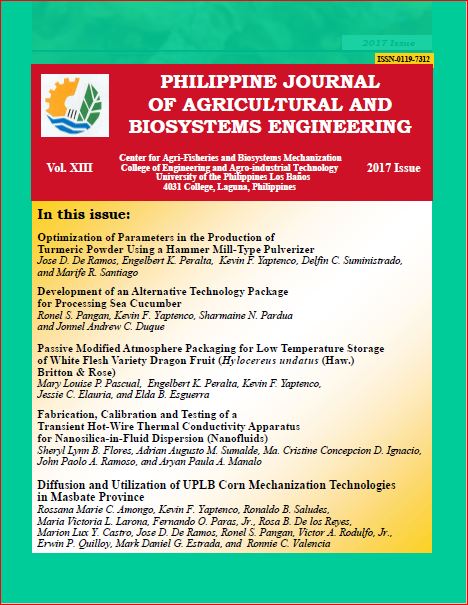Optimization of Parameters in the Production of Turmeric Powder Using a Hammer Mill-Type Pulverizer
Abstract
The effect of moisture content, rotor blade tip speed and grinding screen perforation diameter on the performance of a hammer mill-type pulverizer was studied. One hundred sixty five kilograms of turmeric rhizomes were washed, sliced, dried to different moisture contents and ground by the pulverizer. The experiment used the Box-Behnken design and the parameters were optimized using the Surface Response Methodology approach. ANOVA showed that all the control parameters significantly influenced the response variables input grinding capacity, grinding recovery, and overall average particle diameter. Input grinding capacity decreased as moisture increased from 5% to 15%, increased at high RBTS and large SPD. Blade tip speed played a significant role in the efficiency of grinding; recovery was high at high speeds (>35 m s-1 ). The average particle sizes of the turmeric powder ranged from 0.449 to 1.10 mm. Second-order polynomial models were developed to predict responses for different control variable settings. Optimum machine performance can be obtained at MC of 7.4%, RBTS of 49.1 m s-1 and SPD of 1.0 mm. At these settings, predicted values of grinding capacity, grinding recovery, and APD are 142.3 kg h-1 , 100% and 0.494 mm, respectively. End-user requirements for fine grinding and good machine performance can be obtained at these settings


